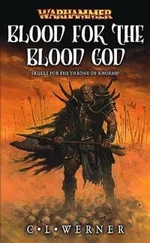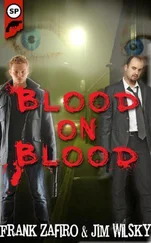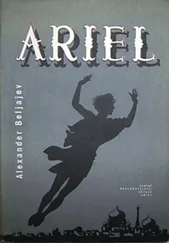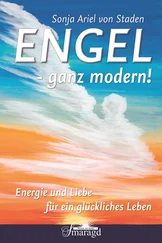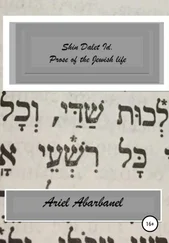Ariel Toaff - Blood Passover
Здесь есть возможность читать онлайн «Ariel Toaff - Blood Passover» весь текст электронной книги совершенно бесплатно (целиком полную версию без сокращений). В некоторых случаях можно слушать аудио, скачать через торрент в формате fb2 и присутствует краткое содержание. Жанр: Религиоведение, на английском языке. Описание произведения, (предисловие) а так же отзывы посетителей доступны на портале библиотеки ЛибКат.
- Название:Blood Passover
- Автор:
- Жанр:
- Год:неизвестен
- ISBN:нет данных
- Рейтинг книги:3 / 5. Голосов: 1
-
Избранное:Добавить в избранное
- Отзывы:
-
Ваша оценка:
- 60
- 1
- 2
- 3
- 4
- 5
Blood Passover: краткое содержание, описание и аннотация
Предлагаем к чтению аннотацию, описание, краткое содержание или предисловие (зависит от того, что написал сам автор книги «Blood Passover»). Если вы не нашли необходимую информацию о книге — напишите в комментариях, мы постараемся отыскать её.
Blood Passover — читать онлайн бесплатно полную книгу (весь текст) целиком
Ниже представлен текст книги, разбитый по страницам. Система сохранения места последней прочитанной страницы, позволяет с удобством читать онлайн бесплатно книгу «Blood Passover», без необходимости каждый раз заново искать на чём Вы остановились. Поставьте закладку, и сможете в любой момент перейти на страницу, на которой закончили чтение.
Интервал:
Закладка:
BLOOD PASSOVER
by Ariel Toaff
[TRANSLATION INTO ENGLISH – COMPLETE TEXT]
REVISION DATE SEPT. 14, 2007
ROSH HOSHANA, NIGHTFALL (5768)
Candia = Venetian Crete Serenissima = the city of Venice Veneto = region northeast of Venice Mestre = closest mainland city to Venice Podestà = magistrate Ratisbona = Regensburg, Germany Salamoncino, Simonino, Simoncino = diminutives of Solomon, Simon. Avogaria di Comun = similar to district prosecutor’s office We have semi-Italianized the names of certain German Jews living in Italy. Ex.: Samuele da Nuremberg. This is to distinguish them from Germans living in Germany, ex.: Andrea of Rinn.
ON THE TRANSLATION:
Prof. Toaff writes with a very large vocabulary, using many words from the Veneziano and Veneto dialects.
His sources include not only the modern derivative literature in English, French, Italian, French and German, but the original documentation in Hebrew, Yiddish, Latin and medieval Italian, sometimes a thousand years old.
He does not translate or italicize the medieval Latin or Italian in his footnotes. These are sometimes in a mixture of languages as well.
In most cases, the material contained in the footnotes is simply paraphrased in the text. Where we have attempted to translate this material, it appears in [in square brackets]. All translators’ notes are in [square brackets].
Ex.: “Chi cerca dove non deve, trovarà qualcosa che non gli piace.” [“He who looks where he shouldn’t, will find something he will not like”]. [Sicilian proverb].
We will continue to translate the Latin in the footnotes and will issue periodic updates and revisions, all bearing the latest revision date.
Our aim is to produce an absolutely perfect complete translation, including the Latin where it is of any interest.
If these texts disappear from one site, they will reappear someplace else. Just search for it. This is a long-term project.
The present translation retains the original footnote numeration, but places the footnotes at the end of each chapter, instead of lumping them together at the end of the book. To our knowledge, no legal action has been taken against people posting this material on the Internet. In rare cases, letters have been received demanding that the text be removed. That’s all. If you’re worried, just check and see whether the on-line Italian texts are still there.
ON THE TEXT:
Prof. Toaff has since partially recanted, and now maintains that: - yes, Jews are a corrupting and disruptive element in society; - yes, Jews lend money at 40% and seem to do little else; - yes, Jews buy and sell justice with huge bribes; - yes, Jews pull off all sorts of fraudulent bankruptcies and swindles; - yes, Jews resort to poisoning and assassination when thwarted; - yes, Jews are obsessed with hatred for Christians and the Christian religion; - yes, Jews kidnapped and castrated Christian boys on a large scale and sold them into slavery in Islamic Spain for centuries; - yes, Jews used [and still use?] human blood in all sorts of quack remedies, despite the Biblical prohibition, even for minor complaints; - yes, Jews used [and still use?] Christian human blood in their matzoh balls at Passover; - yes, Jews used [and still use?] Christian human blood in their wine at Passover; -yes, the blood had to be from Christian boys no more than 7 years of age; - yes, the blood had [has?] to be certified kosher by a rabbi; - yes, there was [is?] a large and profitable trade in fake blood products and animal blood, which was [are?] unsuitable to the purpose; - yes, Christians tried to sell the blood of Christian boys to Jews, but were rejected because the Jews feared it was animal blood; but no, no Christian boys were ever killed to obtain the blood. Never, never! Or hardly ever. It all came from “ voluntary donors”!
Anybody having read the book will simply laugh.
The only “saving clause” is that these charges are made against Ashkenazi Jews only. It would be interesting to see how much filthy “Sephardic linen’ the Ashkenazi could air in public if they so chose.
ON THE TITLEIt makes little practical difference, but we feel that the title “Blood Passover” is preferable to “Bloody Passover”, for several reasons. The title is, after all, “Pasque di Sangue”, not “Pasque Sanguinose”. A “recipiente di sangue” would be a “blood receptacle”, something intrinsically intended to receive and hold blood, a recipient inextricably bound up with blood by its very nature, by design, as its essence (like those tubes they use when you have a blood test). There is a clear identification between the two nouns, A=B. A “recipiente sanguinoso”, a “bloody receptacle”, would be simply a recipient, of any nature whatever, which had merely become soiled or smeared with blood for some reason, the blood being something fortuitous, accidental, and foreign to its essential nature (for example, if someone hit you in the mouth with an ashtray); wash the blood off, and it is no longer a “bloody receptacle”. We believe that it was Prof. Toaff’s intention to coin a phrase, like “blood money”. It is obvious that “blood money” implies far more than simply “bloody money”: it is something specific, something very distinct; a very narrow meaning. ON THE LATIN
It is obvious that this is not correct classical Latin, nor is it standard medieval Latin, as written by someone trained in literature. This is the ugly jargon of Venetian notaries, cram-packed with Italian and Venetian words and “saids”, “afore-mentioneds”, “above-mentioneds”, “afore-saids”, and all the rest of it. In Venetian, ordinary words which appear to be the same as Italian often have radically different meanings. We believe that this may be reflected in some of the Latin given here. This would account for some of the astonishing “translation errors” into Latin. It is obvious that medieval Latin had evolved to such an extant as to become for all practical purposes an entirely different language in certain regions and among certain classes of people, almost like Venetian itself. We have done our best with this material, but to do it justice would require a level of erudition on a level with Prof. Toaff’s own. If you show it to your Latin teacher he will simply tell you that it is not correct and will either fail to understand it easily or will mistranslate it very badly, unless he has the full context. Prof. Toaff is that great rarity in the modern world: a sincere and disinterested lover of truth. It is obvious that he loves all this detail for its own sake, although at times it is hard to tell where he is headed with some of it. It is to Prof. Toaff himself that the present humble and inadequate, but entirely disinterested effort, is sincerely dedicated. Indeed, we look forward to reading some of Prof. Toaff’s other books. We feel that “Blood Passover” is a masterpiece of literature and a masterpiece of history, which deserves to be widely read, not flushed down the Memory Hole in some sort of International ADL Police State. -- Translated by Gian Marco Lucchese and Pietro Gianetti, 2007
- -
[front cover]
ARIEL TOAFF BLOOD PASSOVER EUROPEAN JEWS AND RITUAL MURDER
[back cover]
BLOOD PASSOVER
This book courageously faces one of the most controversial topics in the history of the Jews of Europe, one which has always served as a war-horse of anti-Semitism: the accusation, leveled against the Jews for centuries, of abducting and killing Christian children to use their blood in Jewish Passover rites. Where Italy is concerned, nearly all the ritual murder trials were held in the north-eastern regions, characterized by large settlements of German-origin Jews (Ashkenazim). The most famous case of this kind occurred in Trent, Italy, in 1475, as a result of which many local Jews were indicted and sentenced to death for the murder of the boy who was to become known as “Simon of Trent”, and was venerated as a Saint for several centuries, until only a few decades ago. An unprejudiced rereading of the original trial records, however, together with the records of several other trials, viewed within the overall European context and supplemented by an exact knowledge of the relevant Hebrew texts, throws new light on the ritual and therapeutic significance of blood in Jewish culture, leading the author of the present study to the reluctant conclusion that, particularly where Ashkenazi Jewry was concerned, the "Blood Libel" accusation was not always an invention. ARIEL TOAFF Professor of Medieval and Renaissance History at Bar-Ilan University in Israel, Toaff has written
Читать дальшеИнтервал:
Закладка:
Похожие книги на «Blood Passover»
Представляем Вашему вниманию похожие книги на «Blood Passover» списком для выбора. Мы отобрали схожую по названию и смыслу литературу в надежде предоставить читателям больше вариантов отыскать новые, интересные, ещё непрочитанные произведения.
Обсуждение, отзывы о книге «Blood Passover» и просто собственные мнения читателей. Оставьте ваши комментарии, напишите, что Вы думаете о произведении, его смысле или главных героях. Укажите что конкретно понравилось, а что нет, и почему Вы так считаете.

